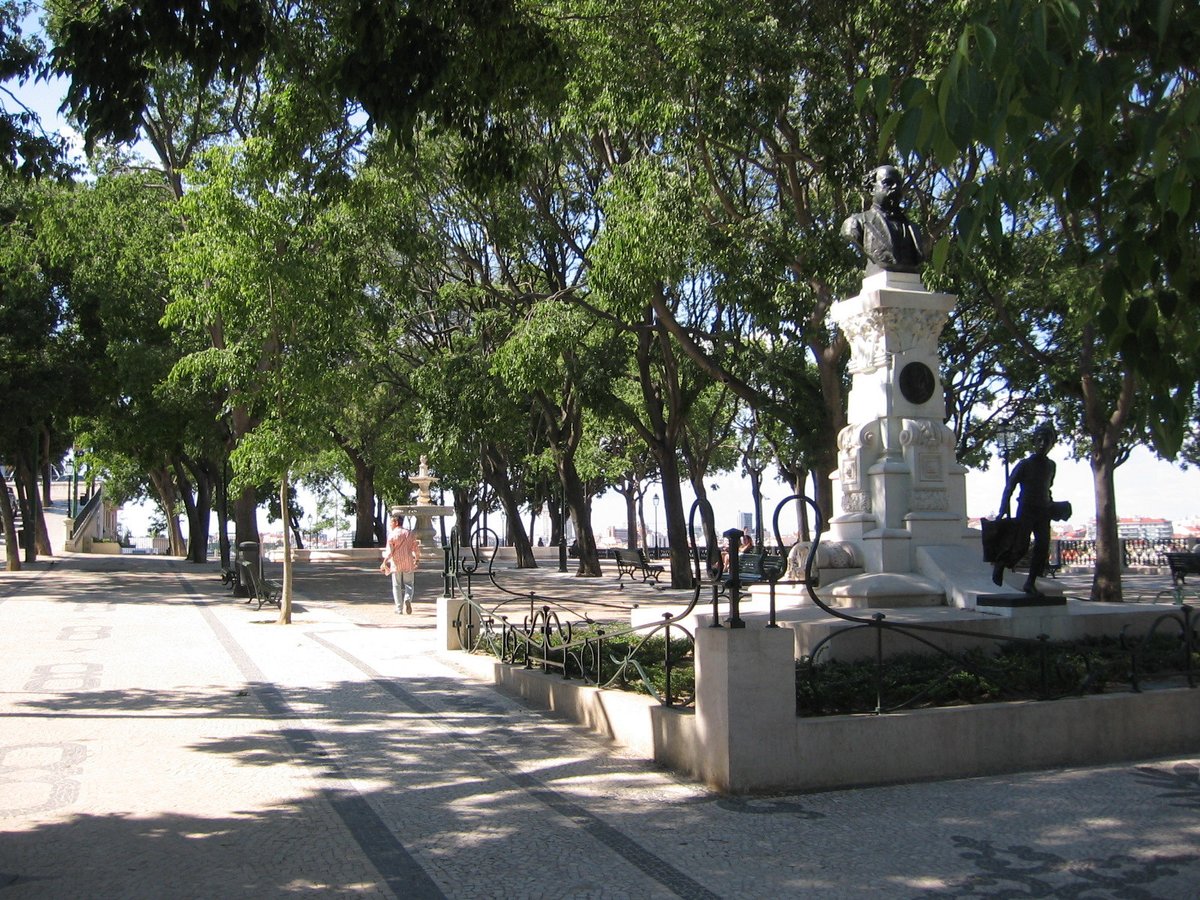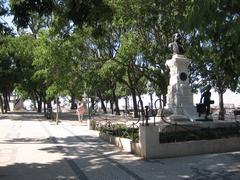
Comprehensive Guide to Visiting Vasco da Gama, Lisbon, Portugal
Date: 17/07/2024
Introduction
The Vasco da Gama district in Lisbon, Portugal, stands as a testament to the nation’s illustrious maritime heritage and its enduring legacy from the Age of Discoveries. This vibrant area, named after the celebrated Portuguese explorer Vasco da Gama, offers a unique blend of historical landmarks, cutting-edge architecture, and cultural treasures. The district’s transformation, particularly following the 1998 Lisbon World Exposition (Expo ‘98), has turned it into a modern urban marvel, drawing visitors from all over the globe. This guide aims to provide comprehensive insights into the district’s history, key attractions, practical visitor information, and travel tips to ensure a memorable experience for all. Whether you are intrigued by Portugal’s seafaring past, fascinated by contemporary urban spaces, or simply looking for practical travel advice, this guide has you covered. For more information on the Vasco da Gama district and its offerings, refer to the official Lisbon tourism website.
Table of Contents
- Introduction
- Early History and Establishment
- The Age of Discoveries
- Expo ‘98 and Urban Transformation
- Architectural and Cultural Landmarks
- Economic Impact and Development
- Educational and Research Institutions
- Visitor Information
- Nearby Attractions
- FAQ Section
- Conclusion
Early History and Establishment
The Vasco da Gama district, named after the famous Portuguese explorer who first reached India by sea, is a testament to Portugal’s rich maritime history and its role in the Age of Discoveries. The area was originally part of the parish of Olivais, which has a history dating back to the Roman era. The district’s modern development is closely tied to the 1998 Lisbon World Exposition (Expo ‘98), which transformed the area into a contemporary urban marvel.
The Age of Discoveries
Spanning the 15th to the 17th centuries, the Age of Discoveries was when European nations explored the world by sea, establishing trade routes and colonies. Portugal was at the forefront of these explorations, with Vasco da Gama’s 1498 voyage to India being one of the most significant achievements. This voyage opened up a direct sea route to Asia, crucial for trade, particularly in spices, and established Portugal as a major maritime power.
Expo ‘98 and Urban Transformation
The Vasco da Gama district underwent significant transformation due to Expo ‘98, an event commemorating the 500th anniversary of Vasco da Gama’s voyage to India. The exposition’s theme, “The Oceans, a Heritage for the Future,” highlighted the importance of maritime exploration and conservation. This event led to the redevelopment of the eastern part of Lisbon, turning it into a modern urban area with new infrastructure, including the Vasco da Gama Bridge, the longest bridge in Europe at the time (source).
Architectural and Cultural Landmarks
Vasco da Gama Tower
Standing at 145 meters, the Vasco da Gama Tower is one of Lisbon’s tallest structures, offering panoramic views of the city and the Tagus River. Built as part of Expo ‘98, the tower symbolizes the district’s connection to maritime exploration (source).
Oceanário de Lisboa
One of the largest indoor aquariums in the world, the Oceanário de Lisboa, was also constructed for Expo ‘98. It serves as a reminder of the importance of ocean conservation, housing a diverse range of marine species and attracting both locals and tourists (source).
Economic Impact and Development
The development of the Vasco da Gama district has significantly impacted Lisbon’s economy. The area has become a hub for business and commerce, attracting numerous multinational companies and fostering economic growth. The Vasco da Gama Shopping Center, one of Lisbon’s largest shopping malls, is a key commercial establishment in the district (source).
Educational and Research Institutions
The district is home to several educational and research institutions that contribute to its historical and cultural significance. The Pavilion of Knowledge - Ciência Viva is an interactive science and technology museum established as part of Expo ‘98. It aims to promote scientific knowledge and innovation, particularly among young people (source).
Visitor Information
Opening Hours
The main attractions like the Oceanário de Lisboa and the Vasco da Gama Tower have varying opening hours, usually from 10 AM to 8 PM. It’s advisable to check their official websites for the most up-to-date information.
Ticket Prices
Entry fees for attractions like the Oceanário de Lisboa range from €15 to €19, with discounts for children and seniors. Combo tickets and guided tours are also available.
Guided Tours
Many attractions offer guided tours that provide deeper insights into the history and significance of the area. Booking in advance is recommended.
Accessibility
The district is well-connected by public transport, including metro and bus services. Most attractions are wheelchair accessible.
Nearby Attractions
Parque das Nações
A modern park with green spaces, walking paths, and recreational facilities (source).
Lisbon Oceanarium
Located within the district, it’s a must-visit for marine life enthusiasts (source).
Gare do Oriente
A stunning transportation hub designed by Santiago Calatrava, offering easy access to other parts of Lisbon (source).
FAQ Section
Q: What are the visiting hours for Vasco da Gama attractions? A: Most attractions like the Oceanário de Lisboa and the Vasco da Gama Tower are open from 10 AM to 8 PM, but it’s best to check their official websites for accurate timings.
Q: How much do tickets cost for the main attractions? A: Ticket prices vary. For instance, the Oceanário de Lisboa charges between €15 to €19. Discounts are available for children and seniors.
Q: Are there guided tours available? A: Yes, many attractions offer guided tours. It’s advisable to book these in advance to ensure availability.
Q: Is the Vasco da Gama district accessible by public transport? A: Yes, the district is well-connected by metro and bus services, making it easy to reach other parts of Lisbon.
Q: What are some nearby attractions? A: Nearby attractions include Parque das Nações, Lisbon Oceanarium, and Gare do Oriente.
Conclusion
The Vasco da Gama district in Lisbon is a vibrant area that embodies the historical significance of Portugal’s maritime heritage. From its early history and establishment to its transformation during Expo ‘98, the district testifies to the enduring legacy of Vasco da Gama and the Age of Discoveries. Architectural and cultural landmarks, economic development, educational institutions, and commemorative events all contribute to the district’s rich historical tapestry. As a modern urban space with deep historical roots, the Vasco da Gama district continues to be a significant part of Lisbon’s cultural and economic landscape. For more information and updates, follow our blog and social media channels.
References
- Lisbon.net, n.d., ‘Vasco da Gama Bridge’
- Oceanário de Lisboa, n.d., ‘Oceanário de Lisboa’
- Pavilion of Knowledge, n.d., ‘Pavilhão do Conhecimento’
- Centro Vasco da Gama, n.d., ‘Vasco da Gama Shopping Center’
- MyGuide Portugal, n.d., ‘Vasco da Gama Tower’
- Parque das Nações, n.d., ‘Parque das Nações’
- CP, n.d., ‘Oriente Station’
- Telecabine Lisboa, n.d., ‘Telecabine Lisboa’
- SANA Hotels, n.d., ‘Myriad by SANA Hotels’
- Accor Hotels, n.d., ‘Ibis Lisboa Parque das Nações’
- Tripadvisor, n.d., ‘D’Bacalhau Restaurant’
- Fifty Seconds, n.d., ‘Fifty Seconds by Martín Berasategui’



























































